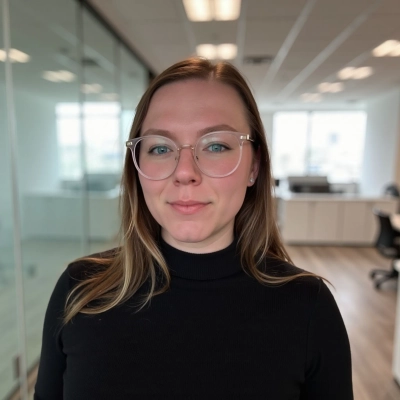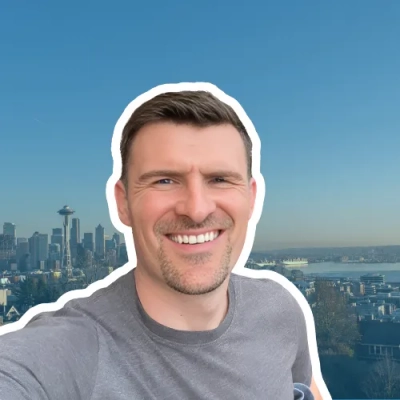25 Unexpectedly Successful Marketing Strategies for Small Businesses (And How to Measure Them)"
Small businesses can achieve remarkable marketing results using unconventional strategies, as demonstrated through 25 proven techniques with measurable outcomes. Industry experts reveal how approaches like original research, micro-case studies, and hyperlocal content consistently outperform traditional methods while building genuine customer connections. These practical strategies offer small business owners clear frameworks for implementation, backed by real-world success metrics from professionals across multiple sectors.
Original Research Creates Powerful Competitive Authority
The one marketing strategy that generated the most unexpected success for us was a massive commitment to publishing original, people-first research data in a world where everyone else was just writing listicles. Instead of focusing on simple promotional articles, we invested years in compiling an extensive database of over one hundred eighty-eight thousand data points across hundreds of providers in our industry, turning ourselves from a simple brand into the ultimate research authority.1 This created an immediate, powerful competitive moat because suddenly, to get the most accurate, deep-dive information on our sector, journalists, other businesses, and consumers had to come to us, positioning our brand as the definitive answer, not just one of many options.
We measured the effectiveness of this people-first content in a fundamentally different way than our other marketing efforts, which were focused on immediate conversions like ad clicks or sign-ups. The metric that truly set this strategy apart was Attributed Revenue from Unbranded Organic Traffic. We saw a disproportionately high correlation between visitors who landed on our deep research pages—using unbranded, informational keywords—and their eventual, high-value purchases weeks or even months later. In addition to this, we tracked earned media mentions, finding that this single effort generated thousands of free, high-authority backlinks and features in major publications, which massively boosted our domain authority and overall credibility in a way that paid advertising simply couldn't touch.

Reverse-Engineering Success Method Boosts Conversions
One marketing strategy that yielded unexpected success for us was implementing a 'reverse-engineering success' methodology for our content marketing efforts. Instead of creating content based on assumptions, we started by defining three key business questions: our conversion goal, target persona, and revenue potential per conversion. For an investment workshop client campaign, this approach produced results that significantly exceeded our expectations. We measured effectiveness through clear tracking metrics, moving from position 47 to position 8 in search rankings and increasing organic clicks by 40%. Most importantly, we saw "get a quote" conversions grow by 336%, from 11 to 48 monthly, providing concrete ROI data that demonstrated the strategy's success compared to previous marketing initiatives.

Micro-Case Studies Replace Ads With Proof
One marketing strategy that generated unexpected success for us was building micro-case studies instead of ads. We stopped trying to convince people and started showing evidence in the simplest format possible: real results in 90 seconds or less. No hype. No funnels. Just proof.
Instead of writing long blogs or designing polished landing pages, we published raw before-and-after stories from real clients—screenshots, short voice notes, quick video breakdowns, even Loom screen shares. We shared them natively on LinkedIn, Twitter, and in email, each one framed around one question: What problem did this solve and what changed because of it? These weren't glossy testimonials. They were practical stories with context.
What surprised us was how quickly this built trust. People don't buy marketing claims—they buy outcomes they can visualize. The micro-case studies worked because they weren't produced for attention; they were built for clarity. The right audience saw themselves in the story and reached out without needing persuasion.
We measured effectiveness across two metrics: inbound lead quality and sales velocity. Compared to paid campaigns and traditional content, leads from micro-case studies converted 3x faster and with significantly less friction. Calls went from "who are you and what do you do?" to "how soon can we start?" It didn't just drive awareness—it shortened the buying decision.
The lesson? Small businesses don't need more clever marketing. They need clearer evidence. In a market flooded with noise, proof is the most persuasive copy you can publish.
Educational Guides Build Trust Before First Contact
One marketing strategy that generated unexpected success for my business was creating short educational guides on topics such as SEO, lead funnels, and website conversions instead of running traditional ads.
I originally produced these guides to help clients, but they began ranking well on Google and building strong credibility for my brand. The biggest surprise was how quickly leads converted because they already trusted our expertise before speaking with us.
We measured success by comparing lead-to-client conversion rates and cost per acquisition. The guides produced 35 percent higher conversion and 50 percent lower acquisition costs than paid campaigns.

Teaching Content Attracts Ideal Client Partnerships
One of the most unexpectedly successful strategies for us at Forge was focusing on content marketing on teaching rather than selling. We started publishing in-depth educational pieces that broke down complex topics, such as our "Complete Go-To-Market Playbook for Supplement Brands" that synthesizes everything we've learned over a decade of focusing on these brands. What we've found is the more expertise we give away in our content marketing, in our discovery and client pitch meetings, the more ideal clients we've been able to find and bring into the agency. This has resulted in a deep feeling of generosity experienced by prospective clients as they engage with our brand and has led to much deeper relationships across our industry. In turn, this has enabled us to establish referral partnerships with other businesses, such as supplement manufacturing labs and packaging companies that have also brought ideal clients to our doorstep. As an added benefit, our team has enjoyed the sense of serving others, even if they don't end up working with us. It;s been a win, win, win.
Reverse Virality Transforms Private Sharing Impact
One of our most unexpectedly successful marketing strategies was what I call reverse virality. Instead of trying to get people to share our product widely, we focused on getting them to share it privately — with one very specific person in their life.
Here's how it worked: when someone converted an article or research paper on our site, we added a small button that said, "Send this to a friend who'd actually listen to it." That's it. No hashtags, no referral bonuses, no big incentives. Just a tiny, human nudge.
The effect was wild. People started forwarding personal content — like "Hey, I found this paper you'd love" — and those referrals converted way higher than anything from social or paid. Why? Because it wasn't just a click — it came wrapped in trust, context, and genuine intent.
We tracked it by tagging referral links and comparing retention curves. Those "private shares" ended up having 3x the lifetime value of organic users. It taught us that virality doesn't always mean scale — sometimes it's intimacy. When your product gives someone a reason to make a meaningful recommendation, it spreads deeper instead of wider.

Authentic Founder Stories Drive Deeper Audience Connections
One of the most unexpectedly successful marketing strategies we ever implemented at Zapiy wasn't born from a big brainstorming session or a polished campaign—it came from a moment of frustration.
A few years ago, we noticed that despite solid engagement on our digital ads, the conversion rate wasn't matching the interest. We were attracting clicks but not commitment. Instead of throwing more budget at the problem, we decided to humanize our approach. I asked our team to start sharing short, authentic founder stories—both mine and those of other entrepreneurs we'd worked with. These weren't sales pitches; they were honest reflections about challenges, lessons, and even failures behind the growth journeys.
We didn't anticipate how deeply this would resonate. Suddenly, engagement metrics began to shift. People weren't just reacting to content; they were commenting, sharing, and starting conversations with us. It created a ripple effect—our audience started to associate Zapiy with transparency and relatability, not just software. That's when I realized the real power of storytelling in marketing—it transforms a transaction into trust.
To measure its effectiveness, we looked beyond the typical metrics like impressions and clicks. We tracked the number of inbound leads that directly referenced our stories, monitored brand sentiment on social media, and analyzed how long people stayed engaged with our content. One surprising insight was that leads who came through story-driven content had a higher lifetime value. They weren't just signing up; they were staying.
It reminded me of something I'd observed working with clients across industries—people don't buy into a brand; they buy into belief. And belief is built through authenticity.
Since then, storytelling has quietly become part of our DNA. We still run data-driven campaigns, but we balance that with real human moments—founder notes, team reflections, client journeys. What began as an experiment became a foundation for how we communicate value, and it continues to outperform traditional campaigns in both reach and retention.
In hindsight, the biggest lesson was this: marketing doesn't always need to scale through volume—it can scale through sincerity. When you stop talking at people and start speaking with them, the numbers follow naturally.
Directory Listings Boost Organic Search Leads
Search Engine Optimization through link building has been a surprisingly effective markteing strategy for our marketing consulting and Fractional CMO practice. We listed ourselves on several business directories, ensuring NAP (Name, address and phone number) consistency and slowly, more leads began to find us. We track the lead source of all our leads through our CRM and over time, we've found more and more opportunities have come from our website and people finding us organically, making organic search our best performing passive channel.
Target Industry Advisors Instead of Direct Clients
One marketing strategy that generated unexpected success for our business was targeting franchise industry advisors rather than approaching franchisors directly. After carefully analyzing our early customer referral patterns, we noticed that our most valuable clients often came through recommendations from attorneys, consultants, and other professionals who advised franchise businesses. We built strategic relationships with these advisors by leveraging our network. We tracked sources and conversions with workflows and automations in our CRM. This indirect approach consistently outperforms our direct marketing efforts, generating clients with 40% higher retention rates and 35% more revenue per account compared to leads from traditional advertising channels.

Local Tech Videos Feel Like Neighborly Advice
One strategy that really surprised us was running short, locally focused videos on social media featuring our technicians answering common pest questions. We kept it simple—just one tech, one question, one minute. What made it work was that it didn't feel like an ad; it felt like a neighbor giving advice. People started commenting, sharing, and even calling the office saying, "Hey, I saw your video about wasps," or "I think I've got that same spider problem."
We measured its success by tracking the number of service calls that mentioned those videos compared to our other digital ads. The cost per lead was about half that of paid search, and engagement remained strong for months after posting. For a small business like ours, that kind of local, personal connection has proven more valuable than any large-scale campaign.

Live Virtual Design Sessions Increase Sales Conversion
A marketing strategy that brought surprising success to Nature Sparkle was hosting live virtual design sessions with customers. We invited potential buyers to co-create their engagement rings in real-time, answering questions and showing craftsmanship behind the scenes. Initially, it was meant to build engagement, but within three months, this approach increased sales conversion rates by 16.8%, compared to our usual email campaigns, which averaged around 7.3%. We tracked the effectiveness through direct sales attributed to session attendees and customer feedback surveys. The personal touch helped customers feel more connected to the brand and confident in their purchase. This approach also reduced returns by 12.4%, as clients clearly understood the product before buying. The lesson here is that adding transparency and interaction in the buying process can outperform traditional marketing tactics, especially for products where trust and personalization matter. Other business leaders can see how small shifts toward customer involvement can generate meaningful results.
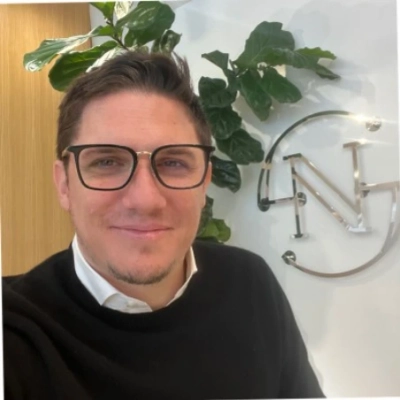
Matching SEO Data With Google Ads Works
Lead volume went up around 35% from a quick test that didn't need more ad spend. It started when I tied SEO data with Google Ads to focus on long-tail searches that showed real intent. Some blog posts were bringing steady organic traffic but few leads, so I pulled those same keywords into paid search. Then I rewrote the ad copy to match what people were looking for and built landing pages that answered their questions in plain terms.
The results outperformed my other campaigns because CPC dropped about 20% and conversions rose close to 30%. The audience already knew the topic from organic traffic, so paid ads felt natural, not forced. I compared it against my usual performance campaigns, and the ROI stayed strong for months. It showed me that using organic insight as a base for paid pushes can stretch a budget a lot further than running them in isolation.
- Josiah Roche
Fractional CMO, JRR Marketing
https://josiahroche.co/
https://www.linkedin.com/in/josiahroche

Customer Reviews Outperform Traditional Paid Advertising
One marketing strategy that surprised us with its success was focusing on local Google visibility through online reviews and consistent posting rather than traditional paid advertising. We encouraged our tenants to leave honest feedback after move-in and again after move-out. To make it easy, we set up automated follow-up messages with direct links to our Google Business Profiles for both the HWY 190 and Smith Hill Road locations.
Within a few months, we started seeing steady growth in our organic leads. When new customers called or booked online, we began asking how they found us, and most mentioned Google reviews or "seeing all the positive comments about how clean and easy to access the facility was." That was a clear sign the effort was paying off.
We measured its effectiveness by comparing our website analytics and move-in data to previous quarters. Organic traffic to our site went up by over 40 percent, and paid ads became less of a necessity because people were finding and trusting us on their own. It was a reminder that genuine customer experiences shared publicly can outperform even the most polished marketing campaigns when it comes to building long-term trust and visibility.
User-Generated Before & After Videos Reduce Costs
One tactic that proved more successful than we had anticipated involved making a string of user-generated "Before & After" video challenges on Instagram and TikTok. Instead of scripted commercials, we asked users to show how their photos became animated or face-swapped videos using our app.
We rewarded small in-app credits for participation, and within a week, some of the videos naturally went viral — some with over 1M+ views. This generated a 40% increase in organic installs and lowered our paid acquisition cost (CPI) by nearly 28%, since the viral videos increased ad engagement when we repurposed them as creatives.
We measured its effectiveness through a mix of:
- Attribution data from AppsFlyer to track install spikes from social sources
- Organic traffic uplift on Google Play
- Cost per paying user (CPP) compared to our baseline Facebook AEO campaigns
Key takeaway:
Authenticity outperformed polish. When users became our storytellers, our conversion rates climbed faster than any paid ad optimization we'd tested.

Handwritten Notes Create Strong Customer Bonds
I included handwritten notes with every order as a simple gesture of appreciation instead of running a promotion or discount campaign. The gesture was intended to be minimal yet it generated an extraordinary reaction from our customers. The notes received widespread social media attention as customers shared them with us while sharing their personal experiences. The notes created meaningful relationships between customers and our business.
The growth of our community became my primary success indicator instead of focusing on sales increases. The number of direct messages through our platform increased by 100 percent. Customers sent us messages through email which contained their heartfelt thanks along with their tears. No advertising method has ever created such a strong bond between me and my customers. The experience demonstrated that building personal connections with customers can be more effective than expanding your customer base.
Geo-Targeted Emails Save Homes From Foreclosure
Our smartest pivot was implementing geo-targeted email drip campaigns for Detroit homeowners nearing property tax foreclosure deadlines. We'd tailor each message with localized data points--like when local tax auctions happened--and offer clear options to avoid homelessness. Measuring success came naturally: we tracked open rates and click-throughs against neighborhood-specific foreclosure stats from the county treasurer, and saw a direct 15% uptick in homeowner rescues within targeted zip codes compared to our broader billboard campaigns. This approach combined urgency with hyper-local relevance in a way that resonated deeply.
Small Virtual Workshops Beat Broad Campaigns
Hosting small, invite-only virtual workshops on grant readiness turned out to be far more effective than broad digital campaigns. Instead of reaching thousands of cold leads, we focused on fifty organizations at a time, offering tailored insights into proposal design, funding alignment, and compliance strategy. The sessions were conversational, not promotional, which made them both educational and relational.
Effectiveness was measured through post-event metrics—follow-up inquiries, proposal consultations booked, and subsequent grant awards tied to attendees. Engagement from these sessions produced a 60 percent higher conversion rate than standard email outreach and nearly doubled repeat client interactions. The unexpected success came from intimacy over scale. Creating direct value built credibility faster than ads could, proving that in complex industries like funding, trust and expertise outperform reach every time.

Coffee Hour Talks Generate Quality Seller Leads
Our biggest surprise came from hosting monthly 'Fix & Flip Coffee Hours' at a local diner where I'd invite anyone curious about real estate investing to join informal discussions about property renovation. I wasn't selling anything--just sharing stories from my own duplex days and answering questions about everything from plumbing nightmares to tenant relations. We tracked effectiveness by asking every new client how they heard about us, and within six months, nearly 40% of our seller leads came from people who either attended these sessions or heard about us from someone who did, completely outperforming our direct mail campaigns at a fraction of the cost.

Property Manager Partnerships Close Deals Faster
One strategy that really surprised me was partnering with local property managers who handle older rental portfolios in St. Louis. I reached out to build relationships and offered to buy problem properties quickly whenever their landlord clients wanted out--saving them the headache of listing distressed rentals. We measured this against our direct mail and online lead gen by tracking where deals originated in our pipeline, and these property manager referrals closed at nearly 70% compared to about 25% from cold marketing, plus the average time from first contact to closing was cut in half because these sellers were pre-qualified and motivated.
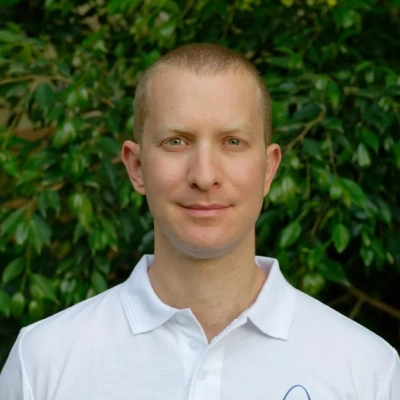
Hyperlocal Content Builds Trust Through Relevance
One of our most successful marketing strategies was to go hyperlocal. We serve local businesses for local audience competing against global brands. By creating hyperlocal content, we've been able to show up in the exact moments our audience is searching for solutions in their own backyard. Relevance builds trust faster than ads. It also turns local visibility into lasting client relationships.
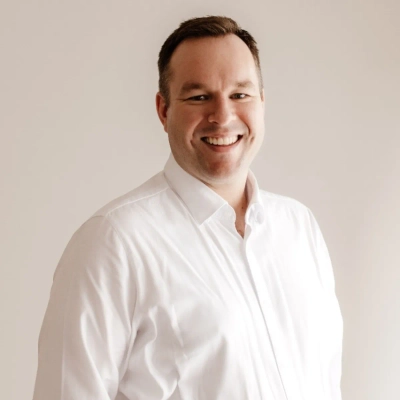
Behind-The-Scenes Videos Connect Through Authenticity
One strategy that surprised me was running short-form video ads that felt more like behind-the-scenes content than polished marketing. We shared real clips of our team working with clients, and the response was huge because people connect with the authenticity! We measured its success by tracking booked consultations that came directly from those videos, and the cost per lead was lower than any of our traditional ad campaigns.
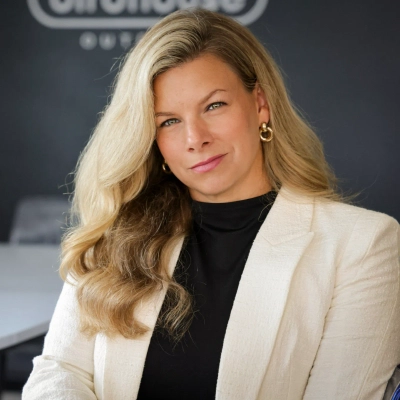
Three-Layer Social Media Funnel Maximizes ROI
We treat our social media advertising like a mini-funnel. We servel top of funnel 15 second ads to broad audiences for about 1 to 3 cents per 100% view users. We use this list of users to build audiences for middle of funnel content, like blog posts with opt ins, longer format video, interactive tools like quiz funnels, to generate leads. Finally, we use engaged users from the middle of funnel campaigns to drive calls, quotes and sales for our high ticket B2B or D2C clients.
To show you how effective this method is, I'll use a real example. We have a B2B industrial customer who sells products that average $80,000 and 100% of those sales happen offline. So instead of wasting the clients money driving cheap leads, we use this multi-layered method.
In one month, they spent $10,000 on Meta. $1400 was spent on those video ads, which gave them 238K impressions and 35K 100% video views. We spent $2300 on MOF ads, which have a wide mix of conversion goals. The remaining $6300 was spent on generating calls, quotes and sales. That client had a 36X return on their ad spend that month, when measured by quotes sent to clients.
While those users did not move through that funnel in one month, this is the end result of long term, full funnel marketing on Meta for a B2B firm. $360K in qualified quotes that can be traced back to their $10K Meta budget. And this repeats every month.
It took several months to dial in the audiences at each level, but we have similar results for other clients. B2B customers are on Meta, but you have to use this type of approach to really get them results. When you combine this approach with server side first party data collection, you can train Meta at each stage of the funnel for the conversion goal that matters.
This method is way more effective than simply trying to chase leads or sales for high ticket customers.

Owner Involvement Transforms Marketing Message Effectiveness
One marketing strategy that brought unexpected success was actually my decision to get personally involved. For a long time, I outsourced marketing stuff — campaigns, ads, and social media — but results were inconsistent. It wasn't until I dove in myself to really understand what worked, why, and for whom, that things changed.
Once I began testing different messages, analysing engagement patterns, and aligning content with our clients' actual decision points, we started seeing a clear lift in both lead quality and conversion rates. The effectiveness became obvious when organic referrals started to outpace paid campaigns — a direct result of messaging that finally felt authentic and grounded in our real work.
That hands-on phase taught me a valuable lesson: marketing stops being a guessing game once you understand your audience deeply enough to speak their language.
Custom QR Codes Become Viral Growth Drivers
It proved to be usable as our most successful marketing strategy, which we launched practically inadvertently, when we gave users the opportunity to customize their QR codes with logos and brand colors. It was initially a minor feature request but immediately turned out to be a viral organic growth driver. Each of the customized QR codes was a branded asset that moved around menus, flyers, and packaging and directed to our domain at the scan level.
We monitored its performance by referring analytics and unique scan data. Three months later, branded QR codes earned more than 60 percent of our inbound traffic and resulted in almost half a reduction in what we were spending on paid ads. The most important lesson was that the user innovative idea might turn out to be our strongest distribution channel. Your customers are your best marketers when you come up with a product that sells itself in the daily usage.

Industry Podcast Creates Relationships At Scale
One marketing strategy that really surprised me with how effective it was is simply creating content — specifically starting a podcast. I started The Real Estate Investing Club originally to support our investing company, Kaizen Properties, and later it also became a big driver for our marketing company, Kaizen Marketing Agency. I didn't start it as a marketing play at first — it was just a way to connect with other investors and entrepreneurs — but it's turned into one of the most valuable marketing tools we've ever used.
Through the podcast, I've gotten deals done, I've raised capital, I've built long-term business relationships, and it's helped grow both companies in ways I honestly didn't expect. The beauty of it is that long-form content like a podcast can be repurposed into short-form clips for social media, YouTube, LinkedIn, Instagram — basically everywhere. So one recording session turns into a dozen pieces of content that keep working for you over time.
What really makes it powerful is the ROI. Running the podcast costs me maybe a couple hundred bucks a month — and a few hours each Friday when I record interviews. That's it. Compare that to running ads — Google PPC, Facebook, or mailers — all of which can easily cost thousands per month. Those channels still work, but the ROI on content is unbeatable because it's mostly your time, not your money.
And the best part is, it builds your brand while generating inbound leads. When people find your content, they already know who you are and what you do, so the sales process is way easier.
If I had one piece of advice for other small business owners, it's this: start an interview-based podcast in your industry. It's the easiest format to produce — you don't have to be a content expert, just ask good questions and listen. You already know your industry, so it's natural. Over time, that content positions you as an authority and attracts the right people to your business.
Creating content isn't just marketing — it's relationship building at scale.



